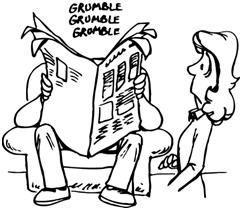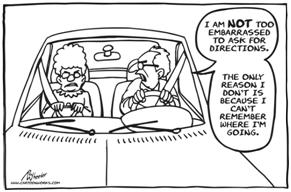Advice vs. Input
 Do you offer advice or do you offer input? It depends.
Do you offer advice or do you offer input? It depends.
If you expect the sage wisdom you are offering to be followed, you are offering advice.
If you are offering what you consider the most productive course of action without any expectation, you are offering input.
Advice seems to flow downhill at you like an avalanche; input is just there for the choosing.
If you are a parent, chances are, you are offering advice, no matter how you disguise it. Advice is rarely accepted.
Most often, when you receive input, you are paying for it. Input is high priced advice without expectation.
It’s easier to offer advice than it is input. Just decide what you think someone else should do based on what you think you would do in that situation. There’s the rub. Advice is more about you than it is about them.
Reminds me of a story . . .
My father was always on me about my hair when I was a teenager. Longer hair was the fashion then but it was never in fashion with my father. It was a constant source of contention. Then one day we were traveling together in the car and the topic came up again. After my father had his say, I asked him why he couldn’t let it alone. I said, “I’m doing OK in school, I don’t get into any trouble, I don’t do drugs, and I always came home on time. What’s the big deal about my hair?” His answer: “I’m embarrassed about it with my friends.”
When his dictate (advice) was ignored, it seemed to suggest to him that he didn’t have proper control over me and that would reflect badly on him with his friends. It was more about him than it was about me.
Advice is controlling. If you have a dog in the fight, you’ll bite to be right.
Input lacks the emotional charge that often gets in the way of advice being taken.
The telltale sign of advice is that it’s jam packed with these three words: “Should,” “Must,” and “Ought.”
Input often contains more questions. “Have you ever considered . . .?” “What do you think is the natural course of events if you continue that action?”
None of us are likely to stop parceling out advice anytime soon. The question worth consideration is: “How likely is it to be followed?”
The answer to that question will get us more curious about how to offer more input and less advice.
All the best,
John
LOSE WEIGHT & KEEP IT OFF
STOP SMOKING FOREVER
SLEEP THROUGH THE NIGHT EVERY NIGHT
IMPROVE YOUR SELF CONFIDENCE
I LOVE MY BODY
RELAX IN 2 MINUTES
FEEL FOREVER YOUNG
VIRTUAL MASSAGE
Be Sociable, Share!

 You will experience a discrepancy gap between you and another until you can come up with a workable fit between what you want to give them and what they want, and vice-versa.
You will experience a discrepancy gap between you and another until you can come up with a workable fit between what you want to give them and what they want, and vice-versa. It’s really easy to measure the rut you’re in. All you have to do is measure your comfort level there.
It’s really easy to measure the rut you’re in. All you have to do is measure your comfort level there. What may be a problem for you may not be to someone else. Problems are relative.
What may be a problem for you may not be to someone else. Problems are relative. I glommed onto the obvious yesterday. If you want better answers, ask better questions.
I glommed onto the obvious yesterday. If you want better answers, ask better questions. How much do you embrace the unexpected?
How much do you embrace the unexpected? In the past, one of life’s biggest challenges for me has been getting past the past. I don’t think I’m alone.
In the past, one of life’s biggest challenges for me has been getting past the past. I don’t think I’m alone.
 No matter how unique we consider ourselves to be, we are dyed-in-the-wool copy cats. We can’t help it.
No matter how unique we consider ourselves to be, we are dyed-in-the-wool copy cats. We can’t help it. It seems kind of silly to say that we wear goggles every day, but we do. They are our windows to the world.
It seems kind of silly to say that we wear goggles every day, but we do. They are our windows to the world.